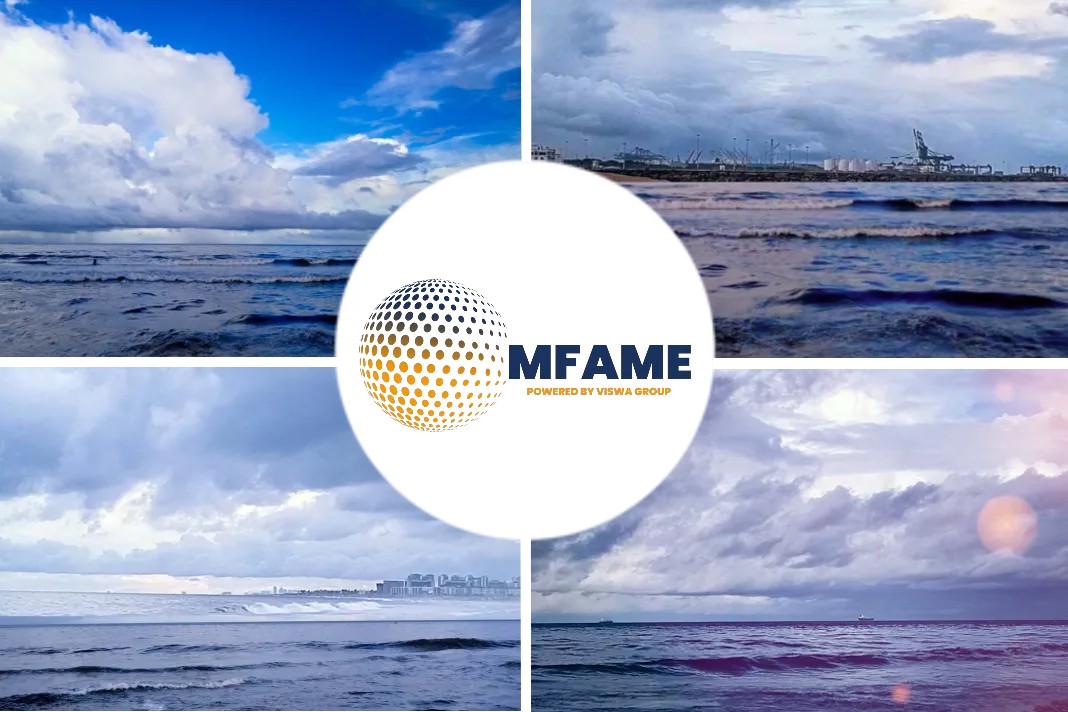
- World’s first ship-to-containership methanol bunkering
- Higher costs for methanol can be mitigated: MPA
- Separate bunker licenses might be issued for methanol: MPA
Singapore completes first methanol bunkering, learnings to be presented to IMO, states a Platts news source.
Maersk container ship — the world’s first running on eMethanol
A Maersk container ship — the world’s first running on eMethanol — has been successfully refueled with around 300 mt of bio-methanol via a ship-to-ship transfer in Singapore July 27, marking the country’s first methanol bunkering operation, said the Maritime and Port Authority of Singapore (MPA) in a statement July 27.
The operation is also the world’s first ship-to-containership methanol bunkering, with the bio-methanol fuel provided by OCI Global and transferred from Hong Lam Marine’s tanker Mt Agility, said MPA.
“This operation will help inform the development of the various standards, including the Technical Reference for methanol bunkering operations in Singapore, and guide our approach for future pilots and trials of alternative marine fuels,” said MPA’s Chief Executive Teo Eng Dih.
The Technical Reference – which covers the operational and safety requirements to deliver methanol from a bunker tanker to receiving ships — is being developed and is expected to be ready next year, MPA said.
In addition, MPA will present its learnings from the operation to the International Maritime Organization later this year to support the safe adoption of methanol as a marine fuel, it said in the statement.
Teo added that more work must be done before bunkering methanol from a terminal to a container ship can take place, and expects to see more ship-to-ship bunkering in the next year.
“As different container vessels running on methanol enter Singapore, and given the scale and complexity of each vessel, we will also need to develop specific models for the specific vessels,” he said.
Mitigating risks
MPA had studied past methanol-related fatal incidents and went through several tabletop and ground deployment exercises before the operation to mitigate risks, it said. This comes as methanol has low acute toxicity, a low flash point and burns with an invisible flame.
A digital model — jointly developed by several research institutes in Singapore — is also used to predict the potential dispersion path of the methanol plume in case of spills, and help to identify potential leaks and fires during operations, MPA said.
A hazard identification, hazard and operability study workshop was held in May this year with over 40 participants including methanol bunkering partners and government agencies, MPA added.
MPA staff and Hong Lam Marine crew members also went through a customized methanol firefighting program ahead of the bunkering operation.
“The success of the methanol bunkering operation is a result of nearly a year’s preparations with various government agencies, research institutes, international collaborators, and industry to develop rigorous safety procedures through in-depth operational and risk assessments, modelling, and validation,” said Teo.
Green cost premiums
However, greener fuels like eMethanol are still more expensive compared to their conventional fossil counterparts, which is in turn pricier than conventional bunker fuel.
“As the very first [methanol bunkering] when the supply chains are not quite fully developed, it is a higher cost,” Teo said at a media brief last week.
“The cost differential can be mitigated and can be done in a variety of ways.”
In Singapore, the price of 0.5%S marine fuel — the prevalent bunker fuel — was at $594/mt July 26, according to assessments by Platts, part of S&P Global Commodity Insights. The bunker price for fossil methanol was at $657.907/mt on an oil-equivalent basis.
Meanwhile, for green methanol, FOB Shanghai eMethanol price rose $7.49/mt on the day to $2,243/mt July 26, data from S&P Global showed.
Platts launched daily production cost-based renewable methanol prices for North America, Europe, and Asia on June 19, 2023.
MPA expects methanol bunker suppliers to tap commercial opportunities in the Port of Singapore, as the use of methanol as a bunker fuel is expected to go up in line with the increasing number of methanol-fueled ships in the coming years, it said, citing DNV’s Alternative Fuels Insight platform, which showed 29 methanol-powered ships, including retrofits, ordered in June, up from 12 in the previous month.
License and regulation
MPA said it will establish the necessary regulatory framework, including bunkering standards, to ensure the quality of fuel supplied in Singapore.
When asked at a media brief last week if MPA will consider allowing existing conventional bunker fuel licensees to supply methanol as well, Teo said the statutory board remains undecided at this stage.
“We haven’t come to a decision, but my preliminary view is that it may be necessarily for separate licenses, at least at the start, because of the extent of all the training that [bunker suppliers] have gone through,” he said.
The licensing process must enable MPA to work with each methanol bunkering supplier to go through the full suite of safety training and programs, to ensure that operations can be conducted in a safe and efficient manner, added MPA.
Did you subscribe to our daily Newsletter?
It’s Free! Click here to Subscribe!
Source: Platts














![[Watch] Crazy Power Needed to Move World’s Largest Containerships](https://mfame.guru/wp-content/uploads/2023/11/mfame-tanker-100x70.jpg)

